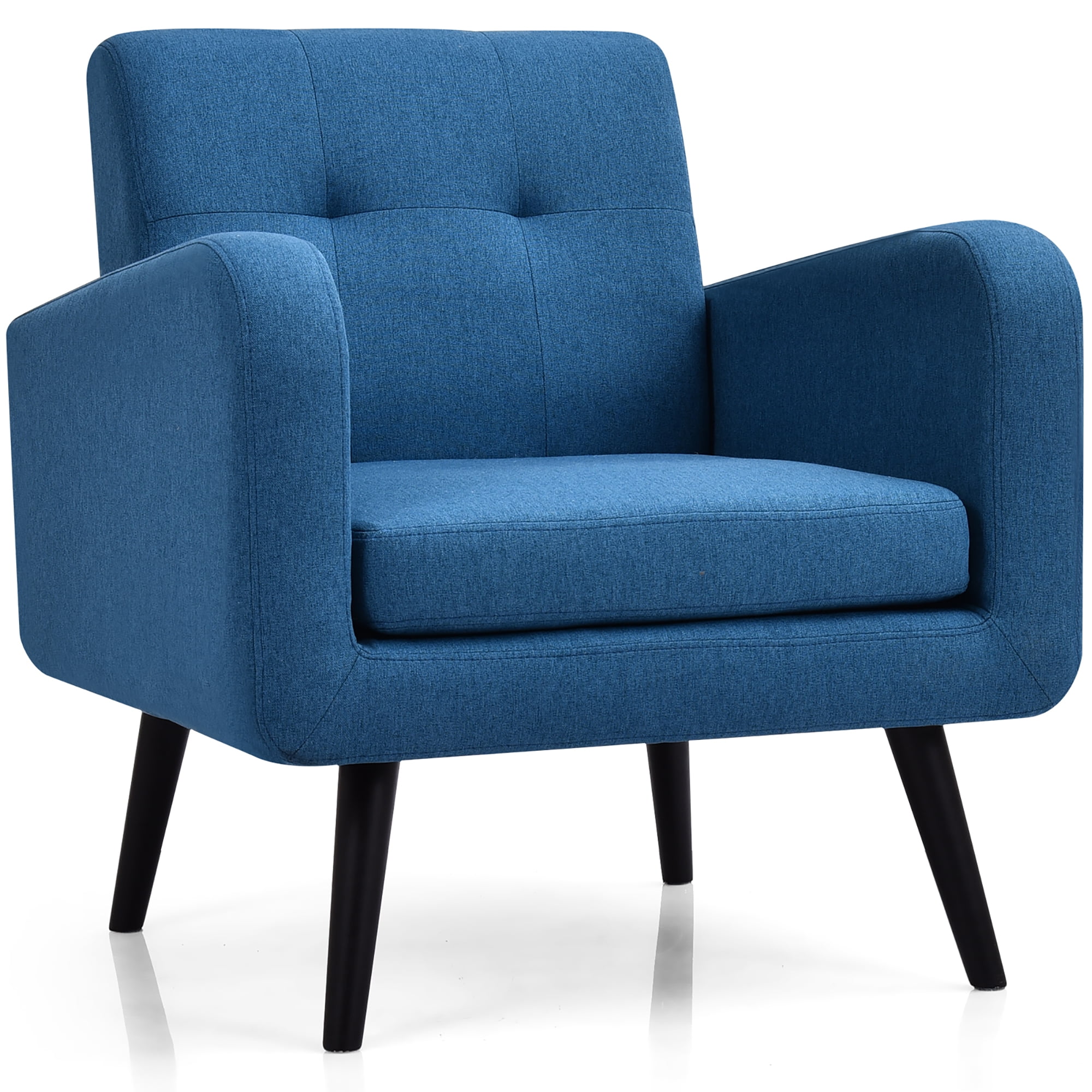Types of Blue Chairs: Hay About A Chair Blue

Blue chairs are a versatile and popular choice for any home, adding a touch of color and style to various spaces. From classic to contemporary, there’s a blue chair to suit every taste and need.
Classifying Blue Chairs by Material
The material of a blue chair significantly impacts its aesthetic and functionality. Here are some common types:
- Wood: Wooden chairs are known for their durability, warmth, and classic appeal. They can be stained or painted in various shades of blue, creating a timeless look. Examples include oak, mahogany, and walnut chairs.
- Metal: Metal chairs offer a modern and industrial vibe, often featuring sleek and minimalist designs. Blue metal chairs can be made from steel, iron, or aluminum, each with its unique properties.
- Fabric: Fabric chairs provide comfort and versatility, with a wide range of textures and patterns available. Blue fabric chairs can be upholstered in cotton, linen, velvet, or leather, offering different levels of softness and durability.
- Plastic: Plastic chairs are lightweight, affordable, and easy to clean, making them ideal for outdoor use or casual settings. Blue plastic chairs are often found in vibrant hues, adding a pop of color to any space.
Classifying Blue Chairs by Design
Blue chairs come in various designs, each with its unique aesthetic and functionality.
- Armchair: A classic design with armrests for comfortable seating, armchairs are perfect for relaxing and reading. Blue armchairs can be found in traditional, modern, or contemporary styles.
- Dining Chair: Designed for use at the dining table, dining chairs often feature a sturdy frame and comfortable seating. Blue dining chairs can be upholstered in fabric or leather, adding a touch of elegance to any dining room.
- Office Chair: Office chairs prioritize comfort and ergonomics, with adjustable features like height and lumbar support. Blue office chairs can be found in various styles, from sleek and modern to traditional and comfortable.
- Lounge Chair: Designed for ultimate relaxation, lounge chairs often feature a low profile and comfortable cushions. Blue lounge chairs are perfect for creating a cozy and inviting atmosphere in any room.
Classifying Blue Chairs by Style
The style of a blue chair reflects its overall aesthetic and design philosophy.
- Mid-Century Modern: Mid-century modern blue chairs are characterized by clean lines, geometric shapes, and a focus on functionality. Examples include the Eames Lounge Chair and the Barcelona Chair.
- Scandinavian: Scandinavian blue chairs are known for their simplicity, functionality, and natural materials. They often feature light wood frames and comfortable upholstery in muted shades of blue.
- Industrial: Industrial blue chairs feature exposed metal frames and a rugged, utilitarian aesthetic. They often have a vintage or distressed look, adding a touch of character to any space.
- Contemporary: Contemporary blue chairs embrace modern trends, with bold colors, unique shapes, and innovative materials. They often feature sleek lines and minimalist designs.
Blue Chairs in Interior Design

Blue chairs are a versatile and stylish addition to any room, capable of adding a touch of sophistication, serenity, or vibrancy depending on the shade and style chosen. They can be the focal point of a room, providing a pop of color against a neutral backdrop, or blend seamlessly into the overall design scheme, adding subtle accents of blue.
Designing a Room with Blue Chairs as the Focal Point
To make blue chairs the focal point of a room, consider a color scheme that complements the shade of blue chosen. For a bold statement, pair a deep navy blue chair with a light and airy color palette, such as white, cream, or beige. This creates a striking contrast that draws the eye to the chair. For a more subtle approach, use lighter shades of blue, such as sky blue or turquoise, and pair them with complementary colors like yellow, green, or orange. This creates a harmonious and balanced design that is both visually appealing and inviting.
- Furniture Choices: To further highlight the blue chairs, choose furniture pieces in complementary colors or neutral tones. For example, a white sofa, a cream-colored rug, and a wooden coffee table can create a classic and elegant backdrop for the blue chairs. Alternatively, you can use patterned furniture pieces, such as a floral rug or a geometric patterned armchair, to add visual interest and create a more eclectic aesthetic.
- Overall Aesthetic: The overall aesthetic of the room should complement the style of the blue chairs. For a modern and minimalist look, choose sleek and contemporary chairs with clean lines. For a more traditional and classic aesthetic, opt for chairs with intricate details and elegant curves.
Incorporating Blue Chairs into Different Interior Design Styles, Hay about a chair blue
Blue chairs can be seamlessly incorporated into various interior design styles, adding a touch of personality and visual interest.
- Modern: Modern interior design emphasizes clean lines, simplicity, and functionality. A deep blue velvet armchair with chrome legs would complement a modern living room with sleek furniture and minimal decor.
- Scandinavian: Scandinavian design focuses on light, airy spaces with natural materials. A light blue chair with wooden legs would blend seamlessly into a Scandinavian-inspired room with white walls, wood flooring, and natural textures.
- Bohemian: Bohemian design is characterized by eclecticism, layering, and a mix of textures. A vibrant blue chair with ethnic patterns would add a touch of bohemian flair to a room with colorful rugs, tapestries, and global accents.
- Industrial: Industrial design embraces raw materials, exposed brick, and vintage furniture. A distressed blue chair with metal accents would complement an industrial-style loft with exposed pipes and concrete floors.
Versatility of Blue Chairs in Creating Moods and Atmospheres
Blue chairs can be used to create a wide range of moods and atmospheres, depending on the shade and style chosen.
- Serene and Relaxing: Lighter shades of blue, such as sky blue and baby blue, evoke feelings of calmness and tranquility. A light blue armchair placed in a quiet corner of the room can create a relaxing retreat for reading or meditation.
- Sophisticated and Elegant: Deeper shades of blue, such as navy blue and sapphire blue, convey a sense of sophistication and elegance. A navy blue velvet chair placed in a formal dining room can add a touch of luxury and refinement.
- Vibrant and Energetic: Brighter shades of blue, such as turquoise and teal, can add a burst of energy and vibrancy to a space. A turquoise armchair placed in a home office can inspire creativity and productivity.
The Art of Blue Chairs

Blue chairs, with their simple yet striking presence, have transcended their utilitarian purpose to become recurring motifs in art history, capturing the attention of artists across movements and styles. From the serene stillness of a blue chair in a Dutch still life to the vibrant expression of a blue chair in a contemporary installation, these objects have served as canvases for artistic exploration and expression.
Blue Chairs in Painting
Blue chairs have been a popular subject in painting for centuries, appearing in various genres, including still life, portraiture, and landscape. The use of blue chairs in paintings can be traced back to the Dutch Golden Age, where they were often featured in still life paintings alongside other household objects. These paintings, such as Willem Claesz Heda’s “Still Life with a Roemer, a Silver Cup, and a Blue Chair” (c. 1635), highlight the meticulous attention to detail and the symbolic significance of everyday objects in Dutch art.
- The Impressionists, known for their focus on capturing fleeting moments and light, often depicted blue chairs in their paintings. For example, Pierre-Auguste Renoir’s “Bal du moulin de la Galette” (1876) features a blue chair in the foreground, adding a touch of color and depth to the bustling scene.
- Pablo Picasso, a pioneer of Cubism, explored the fragmented nature of reality in his paintings. In his “The Blue Room” (1901), a blue chair takes center stage, its form broken down and reassembled in a geometric pattern, reflecting the artist’s fascination with the interplay of shapes and colors.
- Henri Matisse, a leading figure in Fauvism, used bold colors and expressive brushstrokes to capture the essence of his subjects. His “Blue Nude” (1952) features a blue chair that serves as a backdrop for the reclining figure, creating a sense of tranquility and serenity.
Blue Chairs in Sculpture
Blue chairs have also been a subject of interest in sculpture, with artists exploring their form and function in three-dimensional space.
- Alberto Giacometti, a Swiss sculptor known for his elongated figures and stark compositions, created a series of “Chair” sculptures in the 1950s, including one titled “Chair” (1950). These sculptures, made of bronze and painted blue, capture the essence of a chair as a simple yet essential object.
- Jeff Koons, a contemporary artist known for his appropriation of popular culture, has created several sculptures featuring blue chairs. His “Balloon Dog” (1994-2000), a large-scale sculpture of a balloon dog in a vibrant blue, reflects the artist’s interest in the interplay of beauty and banality.
Artistic Significance of Blue Chairs
The artistic significance of blue chairs varies depending on the context and the artist’s intentions.
- Symbol of domesticity and comfort: In still life paintings, blue chairs often represent the tranquility and order of the home.
- Representation of solitude and introspection: Blue chairs can also symbolize solitude and introspection, as seen in paintings and sculptures where they are depicted as solitary objects in a room or landscape.
- Exploration of form and space: In abstract art, blue chairs can be used to explore the relationship between form and space, as well as the interplay of color and texture.
- Expression of personal style and taste: The color blue, often associated with serenity and calmness, can also be used to express the artist’s personal style and taste.
The phrase “hay about a chair blue” evokes a sense of rustic charm, perhaps conjuring images of a simple wooden chair painted a vibrant blue. This imagery aligns with the aesthetic of the timber ridge chair with table , which is crafted from sturdy, natural materials and often features a classic, farmhouse-inspired design.
The blue hue, while not always present in the timber ridge collection, could be easily incorporated into the overall design scheme, reflecting the initial image of a blue-painted chair in a hayfield setting.
The phrase “hay about a chair blue” is intriguing, as it suggests a rustic setting with a touch of whimsy. Perhaps it refers to a chair painted a vibrant blue, reminiscent of a summer sky, or a chair placed amongst hay bales in a barn.
Regardless, the image evokes a sense of simplicity and charm. If you’re looking to create a similar feel in your own space, consider building a diy chair side table from salvaged wood. The rustic texture of the wood, combined with a bright blue paint, could complement the theme perfectly, creating a unique and personalized piece for your home.
The final result would be a tangible expression of the evocative image conjured by the phrase “hay about a chair blue.”
